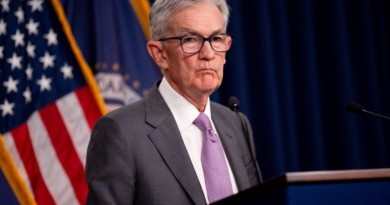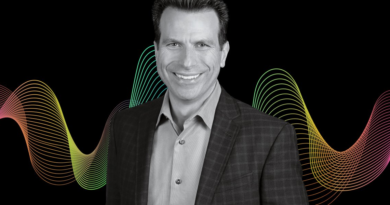LVMH and Kering felt the pinch in 2023—but a new type of luxury is gaining a share of consumers' wallets
Luxury goods once seemed immune to economic woes, but the luster may be fading. During the pandemic, the luxury market thrived as the affluent—unfazed by price hikes—indulged in Birkin bags and rare watches. Yet, signs now point to a slowdown in the “roaring 20s” luxury boom.
Take China, for instance, where the post-COVID sales surge early in 2023 didn’t last. The nation’s slower economic rebound and global uncertainties have contributed to a pullback in luxury spending. According to Claudia D’Arpizio of Bain & Co., a leading expert in the field, despite initial resilience, luxury markets face challenges due to geopolitical shifts and subdued consumer confidence.
This turbulence has impacted major players like LVMH, the conglomerate behind Dior and Louis Vuitton. Its Q3 revenue growth slowed compared to the previous year, setting a tone echoed by rivals such as Gucci-owner Kering and Burberry. Richemont’s half-year sales, although up 6%, fell short of expectations, and secondary market prices for Rolex and Patek Philippe have taken a hit.
While some outliers, like Hermès, defy the downturn with strong Q3 sales, the overall luxury sector is navigating uncertainties.
However, niche segments, such as luxury cruises, are thriving with a 116% YoY growth in constant currency terms.
The complexity of the luxury market’s current landscape leaves us questioning the true trajectory amid conflicting reports of gains and spending ease. So what is really unfolding in the world of opulence?
COVID-fueled boom leading to readjustment
The pandemic marked luxury’s heyday—accumulated savings from stimulus checks and furlough schemes bolstered shoppers’ spending power but left them with fewer avenues to indulge amid travel bans and lockdowns. That’s when many turned to luxury goods as they bought more champagne and designer bags than they did before.
“You had huge excess savings or purchasing power that was released by the fact that people were staying at home, especially white-collar workers,” said Javier Gonzalez Lastra, luxury-focused portfolio manager at Tema ETFs.
The extent of growth across the luxury category during the pandemic is reflected in Deloitte data, which shows that the top 100 luxury companies became bigger and more profitable than ever in FY 2022.
But then, as interest rates and inflation went up, Lastra says that consumers began to pull purse strings tight and be more watchful of where they spent money.
Monstrous pandemic-era spending did wonders for the profit margins of luxury companies, but it was never meant to be the new normal. If anything, that was the anomaly and the easing growth we’re seeing today reflects a gradual readjustment in what used to be the standard before COVID-19.
“Fundamentally, it’s not sustainable, nor should it be,” according to Flavio Cereda, investment manager at Zurich-based asset management firm GAM, referring to the high growth rates seen in the luxury segment. “I think what you see this year is this deceleration, which is a process towards normalization. It looks worse than it is because it comes from a very high level.”
Luxury company executives have also pointed out that the seeming downturn is merely a shift back to how things used to be rather than a total doomsday scenario for luxury goods on the whole. Richemont chairman Johann Rupert noted in the company’s half-year earnings release last month that a “broad-based normalization of market growth expectations across the industry” was underway.
Data supports that too—across all luxury categories globally, luxury industry consumption for 2023 is estimated to be about €1.5 trillion ($1.62 trillion), according to Bain & Co.’s November industry report Long Live Luxury.
That’s roughly 70% higher than 2019 levels in constant currency terms despite an estimated price increase of 29% across the industry for that period to keep up with rising production costs, retail data firm EDITED found.
The performance of different luxury brands can also depend on the type of consumers they target, said Natalia Lechmanova, Mastercard’s chief economist for Europe.
The entry-level “aspirational” consumer might have been more impacted by macroeconomic factors and their effects on his or her wallet, compared to the uber-wealthy.
“We need to appreciate that luxury consumers exist on a spectrum from prosperous upper middle classes to billionaires. The former, has become more price sensitive—investment banks’ bonuses have moderated, the tech sector has shed jobs, the crypto bubble burst, and many well-to-do professionals have had to increasingly prioritize higher interest payments on their mortgages rather than expensive holidays or handbags,” Lechmanova said in an email to Fortune.
A new type of luxury gaining ground
The drop in spending across some segments of luxury reflects the ebb and flow of shoppers’ preferences and appetite for discretionary goods given the current economic environment.
But as Tema ETFs’s Lastra sees it, consumers are merely splurging on a different type of luxury than they did in recent years.
“What we’ve seen in terms of slowdown is mostly driven by the fact that people are now spending on other things,” Lastra said. “So, it’s a matter of share of wallet at the moment, more than job losses or necessarily the pinch of interest rates which is having an impact.”
More specifically, the spending is being directed to luxury experiences, Bain & Co. found.
D’Arpizio, who co-authored the November luxury market report, noted that the bounce-back from COVID-19 and the resurgence of travel has seen more people indulge in experiential luxury during 2023—a trend that is expected to continue into next year.
“What we’ve observed in 2023 is a rebalancing of customer appetite towards experiences and experience-based goods over products, with unparalleled sense of urgency for social life and travels across geographies,” D’Arpizio said. “Spending on experiences is recovering historical highs, with consumers reapproaching luxury beyond products.”
This could mean a boost in categories like travel, hospitality and cruises as tourist flow increases.
As a result of more tourism, luxury goods purchases could also benefit, albeit by less stratospheric degrees, Bain & Co. expects.
Some of these trends are beginning to reflect in company earnings—Europe’s largest hotel group Accor raised its annual profit target twice this year as it witnessed booming demand. British group Rocco Forte Hotels, which has properties across Europe, has also seen revenues rise.
“Experiences more than doubled their value since 2010,” D’Arpizio said. “This ‘new normal’ means luxury markets are blurring their boundaries and brands have the opportunity to extend their reach beyond their core.”
2024 and ahead
With signs pointing in different directions, it’s clear the year ahead for luxury will mark a reshuffle that began in 2023.
HSBC warned in a late November note that as luxury is linked to consumer sentiment, tourism and equity markets, what happens to it can have broader ripple effects.
The bank foresees a more modest pace of growth which, it says, “is nothing to be ashamed of, but slowing momentum is rarely supportive for stocks in this sector.”
With economies in key regions such as the U.S., Europe and China still finding their footing, 2024 could continue to be “challenging” for luxury, Deutsche Bank wrote last week.
But on the bright side, the luxury industry is more resilient when compared to some other consumer sectors of the economy.
“One of the reasons you want to be invested in this sector is because there is the rising of the upper middle class globally, and that’s a fantastic tailwind for all these [luxury] companies,” Lastra said.




